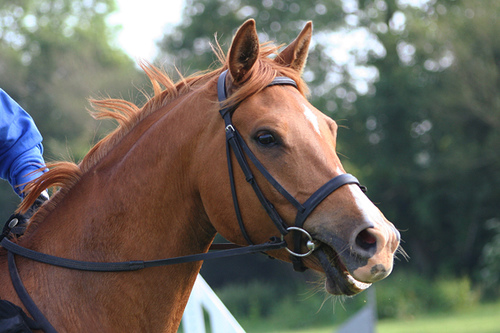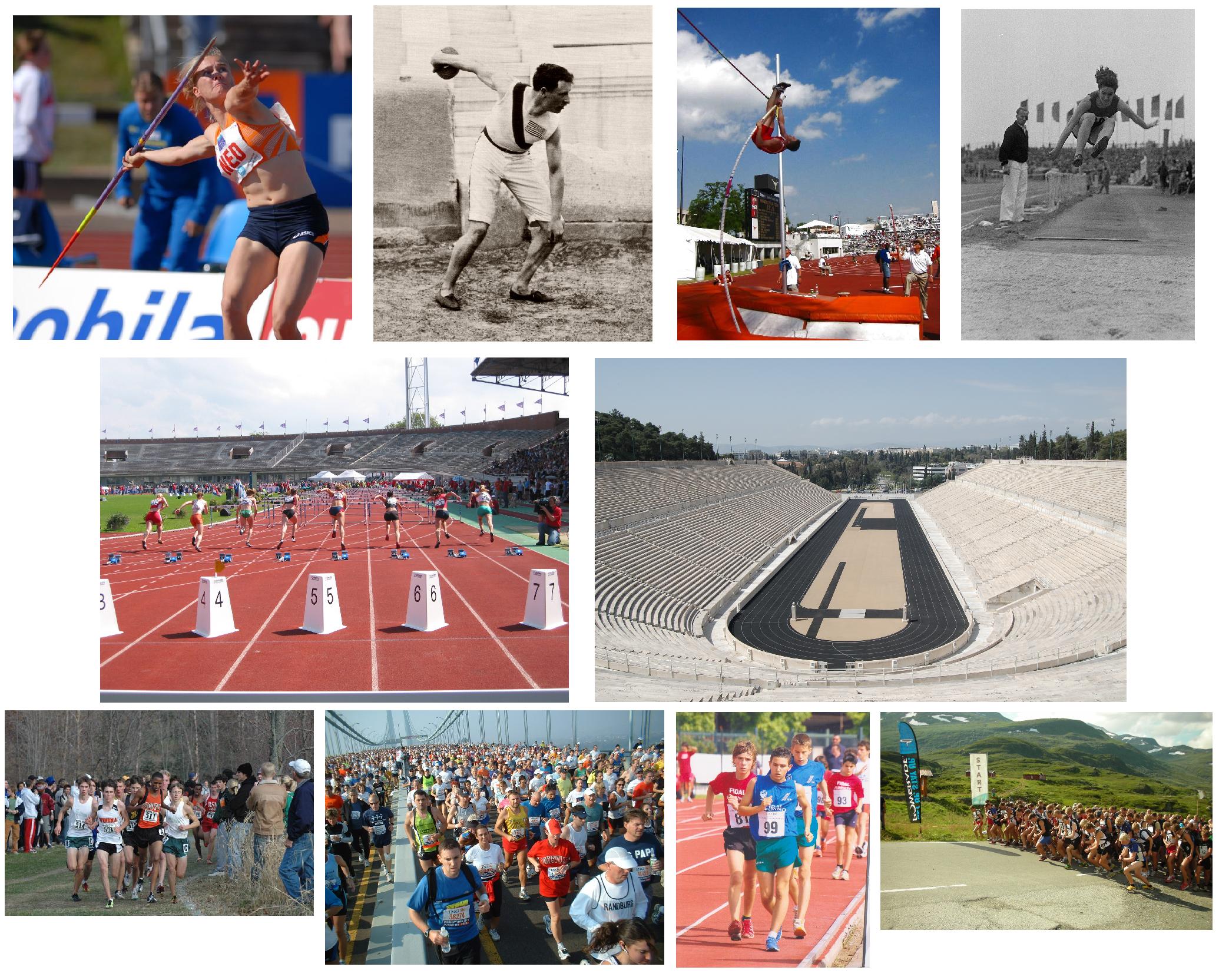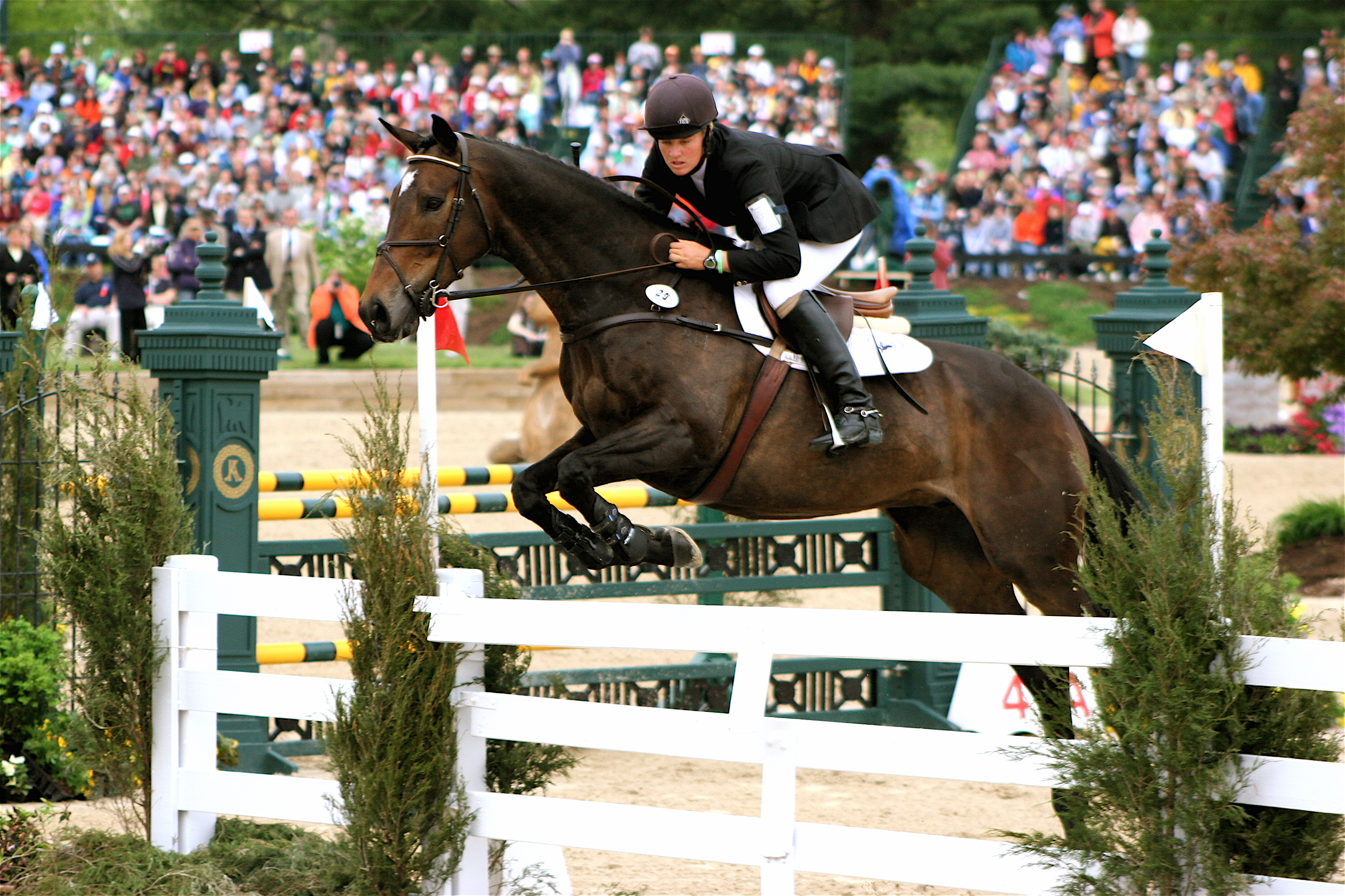|
Bitless Bridle
A bitless bridle is a general term describing a wide range of headgear for horses or other animals that controls the animal without using a bit. Direction control may also be via a noseband or cavesson, if one is used. The term hackamore is the most historically accurate word for most common forms of bitless headgear. However, some modern bitless designs of horse headgear lack the heavy noseband of a true hackamore and instead use straps that tighten around a horse's head to apply pressure in various ways. These are often specifically patented and marketed as "bitless bridles", usually referencing a particular type of headgear known as the cross-under, though other designs are sometimes also given similar names. Origins It is likely that the first domesticated horses were ridden with some type of noseband, made of various materials such as sinew, leather, or rope. [...More Info...] [...Related Items...] OR: [Wikipedia] [Google] [Baidu] |
Bit (horse)
The bit is an item of a horse's tack. It usually refers to the assembly of components that contacts and controls the horse's mouth, and includes the shanks, rings, cheekpads and mullen, all described here below, but it also sometimes simply refers to the ''mullen'', the piece that fits inside the horse's mouth. The mullen extends across the horse's mouth and rests on the ''bars'', the region between the incisors and molars where there are no teeth. The bit is located on the horse's head by the , and which has itself several components to allow the most comfortable adjustment of bit location and control. The bit, bridle and reins function together to give control of the horse's head to the rider. The bit applies pressure to the horse's mouth, and reinforces the other control signals from the rider's legs and weight distribution. A well schooled horse needs little pressure on the bit from a skilled rider. Studies have indicated that soft, consistent bit contact between the rider ... [...More Info...] [...Related Items...] OR: [Wikipedia] [Google] [Baidu] |
Natural Horsemanship
Natural horsemanship is a collective term for a variety of horse training techniques which have seen rapid growth in popularity since the 1980s. The techniques vary in their precise tenets but generally share principles of "a kinder and gentler cowboy" to develop a rapport with horses, using methods said to be derived from observation of the natural behavior of free-roaming horses and rejecting abusive training methods. Natural horsemanship practitioners often describe their principles with evangelical zeal, describing the approach as being a radical departure from "traditional" techniques, which are often portrayed as being based in the use of unnecessary force. Users and practitioners tend to relate benefits both in relation to the quasi-scientific narrative of the ethology of horse behavior, viewing the horse as "other", but also to the idea of an anthropomorphic partnership. High-profile practitioners of natural horsemanship such as Monty Roberts and Pat Parelli market ... [...More Info...] [...Related Items...] OR: [Wikipedia] [Google] [Baidu] |
Halter
A halter or headcollar is headgear that is used to lead or tie up livestock and, occasionally, other animals; it fits behind the ears (behind the poll), and around the muzzle. To handle the animal, usually a lead rope is attached. On smaller animals, such as dogs, a leash is attached to the halter. History Halters may be as old as the early domestication of animals, and their history is not as well studied as that of the bridle or hackamore. The word "halter" derives from the Germanic words meaning "that by which anything is held." Uses A halter is used to lead and tie up an animal.Loch, Wayne. "Haltering and Tying Horses." Department of Animal Sciences, University of Missouri Extension. G28 ... [...More Info...] [...Related Items...] OR: [Wikipedia] [Google] [Baidu] |
Bridle
A bridle is a piece of equipment used to direct a horse. As defined in the ''Oxford English Dictionary'', the "bridle" includes both the that holds a bit that goes in the mouth of a horse, and the reins that are attached to the bit. Headgear without a bit that uses a noseband to control a horse is called a hackamore, or, in some areas, a bitless bridle. There are many different designs with many different name variations, but all use a noseband that is designed to exert pressure on sensitive areas of the animal's face to provide direction and control. Parts The bridle consists of the following elements: * Crownpiece: The crownpiece, headstall (US) or headpiece (UK) goes over the horse's head just behind the animal's ears, at the poll. It is the main strap that holds the remaining parts of the bridle in place. * Cheekpieces: On most bridles, two cheekpieces attach to either side of the crownpiece and run down the side of the horse's face, along the cheekbone and attach to the ... [...More Info...] [...Related Items...] OR: [Wikipedia] [Google] [Baidu] |
United States Equestrian Federation
The United States Equestrian Federation (USEF or US Equestrian) is the national governing body for most equestrian sports in the United States. It began on January 20, 1917, as the Association of American Horse Shows, later changed to the American Horse Shows Association (AHSA). In 2001, the organization changed its name to USA Equestrian (USAE) and, in 2003 it merged with the United States Equestrian Team (USET). In 2017, USEF rebranded as US Equestrian. In 2019, USEF outsourced its laboratory services to the University of Kentucky. Competitions governed by US Equestrian include dressage, driving, endurance riding, eventing, hunt seat equitation, hunter, jumper, para-equestrian, reining, roadster, saddle seat equitation, vaulting, and western riding competition including equitation, western pleasure, reining, trail, western dressage, and related events. The organization also governs breed shows held in the United States for the Andalusian, Lusitano, Arabian, Half-Arabian/A ... [...More Info...] [...Related Items...] OR: [Wikipedia] [Google] [Baidu] |
Rodeo
Rodeo () is a competitive equestrian sport that arose out of the working practices of cattle herding in Spain and Mexico, expanding throughout the Americas and to other nations. It was originally based on the skills required of the working vaqueros and later, cowboys, in what today is the western United States, western Canada, and northern Mexico. Today, it is a sporting event that involves horses and other livestock, designed to test the skill and speed of the cowboys and cowgirls. American-style professional rodeos generally comprise the following events: tie-down roping, team roping, steer wrestling, saddle bronc riding, bareback bronc riding, bull riding and barrel racing. The events are divided into two basic categories: the rough stock events and the timed events. Depending on sanctioning organization and region, other events such as breakaway roping, goat tying, and pole bending may also be a part of some rodeos. The "world's first public cowboy contest" was held on Jul ... [...More Info...] [...Related Items...] OR: [Wikipedia] [Google] [Baidu] |
Competitive Trail Riding
Competition is a rivalry where two or more parties strive for a common goal which cannot be shared: where one's gain is the other's loss (an example of which is a zero-sum game). Competition can arise between entities such as organisms, individuals, economic and social groups, etc. The rivalry can be over attainment of any exclusive goal, including recognition: Competition occurs in nature, between living organisms which co-exist in the same environment. Animals compete over water supplies, food, mates, and other biological resources. Humans usually compete for food and mates, though when these needs are met deep rivalries often arise over the pursuit of wealth, power, prestige, and fame when in a static, repetitive, or unchanging environment. Competition is a major tenet of market economies and business, often associated with business competition as companies are in competition with at least one other firm over the same group of customers. Competition inside a company is usu ... [...More Info...] [...Related Items...] OR: [Wikipedia] [Google] [Baidu] |
Eventing
Eventing (also known as three day eventing or horse trials) is an equestrian event where a single horse and rider combine and compete against other competitors across the three disciplines of dressage, cross-country, and show jumping. This event has its roots in a comprehensive cavalry test that required mastery of several types of riding. The competition may be run as a one-day event (ODE), where all three events are completed in one day (dressage, followed by show jumping and then the cross-country phase) or a three-day event (3DE), which is more commonly now run over four days, with dressage on the first two days, followed by cross-country the next day and then show jumping in reverse order on the final day. Eventing was previously known as Combined Training, and the name persists in many smaller organizations. The term "Combined Training" is sometimes confused with the term "Combined Test", which refers to a combination of just two of the phases, most commonly dressage ... [...More Info...] [...Related Items...] OR: [Wikipedia] [Google] [Baidu] |
Show Jumping
Show jumping is a part of a group of English riding equestrianism, equestrian events that also includes dressage, eventing, Show hunter, hunters, and equitation. Jumping classes are commonly seen at horse shows throughout the world, including the Equestrian at the Summer Olympics, Olympics. Sometimes shows are limited exclusively to jumpers. Sometimes jumper classes are offered in conjunction with other English-style events. Sometimes, show jumping is but one division of a very large, all-breed competition that includes a very wide variety of disciplines. Jumping classes may be governed by various national horse show sanctioning organizations, such as the United States Equestrian Federation or the British Showjumping Association. International competitions are governed by the rules of the International Federation for Equestrian Sports. Hunters or jumpers Show jumping events have show hunter, hunter classes, jumper classes and hunt seat equitation classes. Hunters are judged ... [...More Info...] [...Related Items...] OR: [Wikipedia] [Google] [Baidu] |
English Pleasure
"English pleasure" is the generic term for a number of different English riding classes seen at horse shows in the United States, where the horse is ridden in either hunt seat or saddle seat tack. In the average English pleasure class, the horses perform as a group, exhibiting the natural gaits of the walk, trot, and canter, and may also be asked to extend the trot or to perform a hand gallop. Horses are judged on their manners, performance, quality and conformation. The horse is to give the impression of being a pleasure to ride. In the show hunter and hunt seat world, pleasure-type classes where the horses are not to jump are sometimes referred to as "flat" classes or "Hunter under saddle." In a variation on the pleasure class known as Hunter hack, riders may also be asked to have their horses jump two low jumps and back up. Show hack classes do not require jumping, but instead ask the horse to perform collected, regular, and extended versions of the walk, trot and canter ... [...More Info...] [...Related Items...] OR: [Wikipedia] [Google] [Baidu] |
Dressage
Dressage ( or ; a French term, most commonly translated to mean "training") is a form of horse riding performed in exhibition and competition, as well as an art sometimes pursued solely for the sake of mastery. As an equestrian sport defined by the International Equestrian Federation, dressage is described as "the highest expression of horse training" where "horse and rider are expected to perform from memory a series of predetermined movements." Competitions are held at all levels from amateur to the Olympic Games and World Equestrian Games. Its fundamental purpose is to develop, through standardized progressive training methods, a horse's natural athletic ability and willingness to perform, thereby maximizing its potential as a riding horse. At the peak of a dressage horse's gymnastic development, the horse responds smoothly to a skilled rider's minimal aids. The rider is relaxed and appears effort-free while the horse willingly performs the requested movement. The discipli ... [...More Info...] [...Related Items...] OR: [Wikipedia] [Google] [Baidu] |



.jpg)

